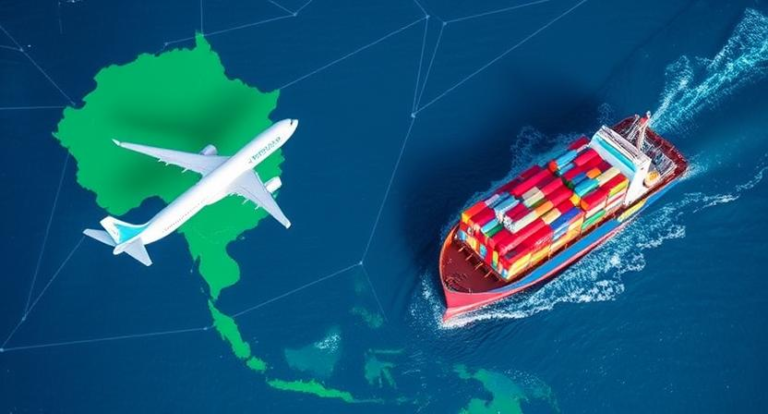As Vietnam continues to expand its role in global trade, businesses must carefully choose between air and sea cargo to optimize cost, speed, and efficiency. Each mode of transport has its advantages and is suited for different types of shipments. This guide explores the key differences, benefits, and considerations to help you determine the best shipping option for your business needs.
Air Cargo: Speed and Reliability
Air freight is the fastest mode of cargo transport and is ideal for businesses that prioritize speed and reliability.
Advantages of Air Cargo
- Faster Delivery: Ideal for time-sensitive goods like electronics, pharmaceuticals, and perishable items.
- Reliable Scheduling: More frequent departures reduce delays compared to sea freight.
- Lower Risk of Damage: Air cargo handling is typically more controlled, reducing the chances of goods being damaged.
- Easier Customs Clearance: Airports usually have streamlined customs procedures, leading to faster processing.
Challenges of Air Cargo
- Higher Costs: Air freight is significantly more expensive than sea transport.
- Limited Capacity: Weight and volume restrictions make it unsuitable for bulky or heavy shipments.
- Environmental Impact: Air transport has a higher carbon footprint compared to sea shipping.
Sea Cargo: Cost-Effectiveness and Scalability
Sea freight is the most widely used method for international shipping, particularly for businesses that require bulk transportation at lower costs.
Advantages of Sea Cargo
- Lower Costs: Ideal for bulk shipments, significantly reducing per-unit transportation costs.
- High Capacity: Suitable for large, heavy, and oversized cargo such as machinery, furniture, and raw materials.
- Eco-Friendly Option: Ships produce fewer emissions per ton of cargo compared to airplanes.
- Flexible Container Options: Businesses can choose between full container load (FCL) and less than container load (LCL), offering flexibility based on shipment size.
Challenges of Sea Cargo
- Longer Transit Times: Shipments may take weeks, making it unsuitable for urgent deliveries.
- Port Congestion & Delays: Vietnam’s major ports, like Cat Lai, often face congestion, causing potential hold-ups.
- Complex Customs Process: Sea freight can involve more paperwork and regulatory procedures.
Choosing the Right Cargo Mode for Your Business
| Factor | Air Cargo | Sea Cargo |
|---|---|---|
| Speed | 1-7 days | 2-6 weeks |
| Cost | High | Low |
| Cargo Size | Limited to small & light goods | Suitable for large & heavy goods |
| Reliability | High | Moderate (weather-dependent) |
| Sustainability | Higher carbon footprint | More eco-friendly |
When to Choose Air Cargo
- Shipping perishable goods, high-value items, or urgent orders.
- Prioritizing reliability and fast customs clearance.
- Managing inventory with just-in-time (JIT) logistics.
When to Choose Sea Cargo
- Transporting bulk commodities and heavy machinery.
- Reducing shipping costs for non-urgent deliveries.
- Prioritizing sustainability and long-term cost savings.
Conclusion
Both air and sea cargo play crucial roles in Vietnam’s logistics sector. The right choice depends on your business priorities—whether speed, cost, or cargo size. For time-sensitive shipments, air freight is the best option, whereas sea freight is ideal for bulk goods at lower costs. By analyzing your logistics needs and market demands, you can make an informed decision that optimizes efficiency and profitability for your business.

